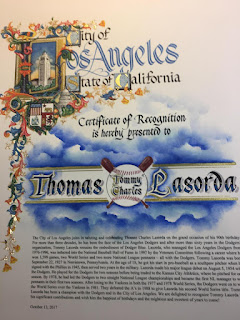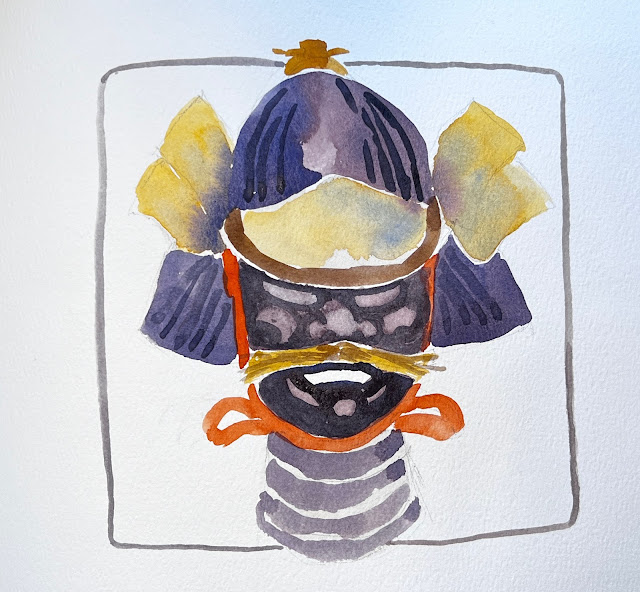.jpeg) |
| Theo and his baseball team attend a game at Tokyo Dome |
As soon as we moved into our rental in San Francisco, Bill became more and more thrilled with living in a city. We'd lived in other big cities, New York, Tokyo, and Paris at various times in our lives. Still, I didn't understand what Bill's best reason for moving to a bustling place was until he said, "I've had a dream since boyhood of being able to walk to a ballpark to see a pro baseball game." We have Oracle Park just a couple of blocks away and an easy walk for us. We used to share Oakland A's season tickets with a good friend and spent many an afternoon in the hot sun watching good, young players. The A's are known for trading their best players and we would watch the World Series on TV partly to pick out the former A's on the Series teams.
As a kid, baseball was my favorite sport to play. My sister and I would hit and throw balls back and forth under the maples in our backyard. I played pick-up games after school and headed toward the school's diamond at recess. I remember the first time I really connected with a ball. I was so surprised that I stood mesmerized as I watched the ball sail into the air out to right field before teammates shouted at me to move toward first base.
I lost interest in playing as a teenager, but Bill persisted through college and shortly after graduating. Rarely, I would get out on a field with friends, stand up to bat, and surprise myself with a hit. Mostly, though I watched. I watched the World Series every year no matter which teams were playing, I watched Bill play in college, and I watched our son Theo being coached by Bill in both Danville and Tokyo. One of the best games for the three of us was a parent vs players game in Tokyo. The kids, some who had never played baseball before the season started, rallied to challenge the parents to a thrilling game.
 |
| Bill learning to bunt |
Sports have a way of drawing people together, even when they root for opposing teams. They all stand during the seventh inning to sing, "Take Me Out to the Ballgame." The fans delight in good plays and favorite players. As I sit in our apartment writing Postcards with the windows open, I can hear the crowd cheering. I look out the window and see the action replayed on the big screen and hope the Giants are winning again. As a young player, Bill learned to support his teammates, calling out to them when they made a good play. Neither of us likes to hear the strident USA chant that sometimes reverberates at sporting events, but we can ignore that when a ball sails with force out over the bleachers, above the excited crowds as they watch it fly past the brick walls around the outfield to land in the Bay beyond the stadium when maybe it is scooped up by one of the kayakers or boaters who circle the stadium and yearn to catch a home run ball.
.jpeg) |
| A day game at Oracle Park |
**************
Stephen Hawking said it best:
"We have this one life to appreciate the grand design of the universe and for that I am extremely grateful."
 |
| Mostly May |
.jpeg)
.jpeg)
.jpeg)
.jpeg)

.jpeg)








